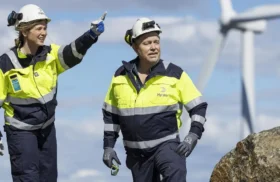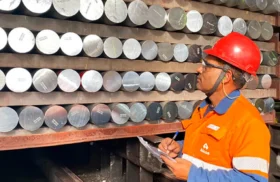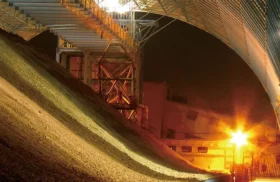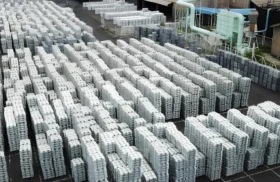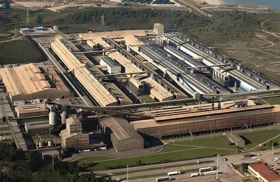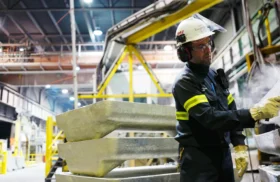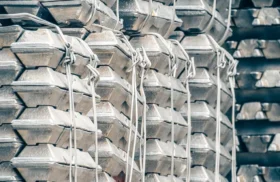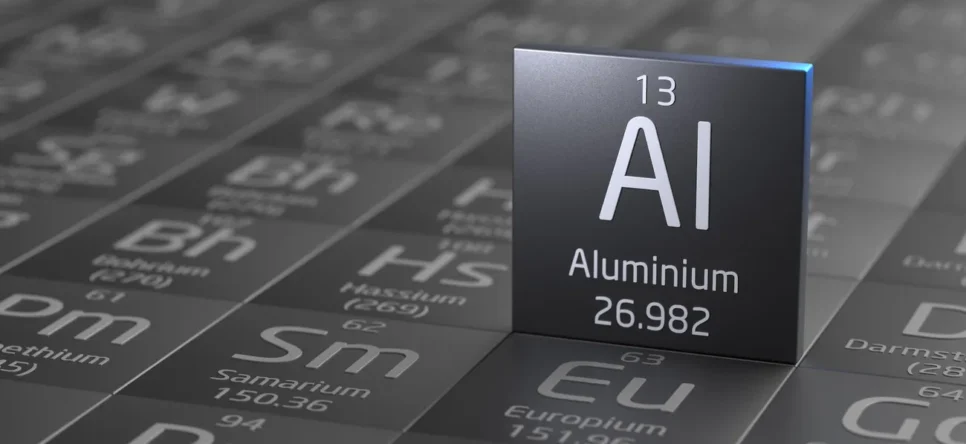
Aluminium’s journey is nothing short of remarkable. What began as a 19-century laboratory marvel—so precious it once outpriced gold—has morphed into the quiet powerhouse of today’s low-carbon economy. By 2025, roughly 111 million tonnes of primary metal and another 30 million tonnes of recycled scrap swirl through global trade. China still supplies about 60 % of that flow, yet its self-imposed 45 Mt ceiling is within touching distance.
Hydropower hiccups, fresh U.S. tariffs, and a stampede toward low-carbon materials have carved the market into distinct regional price zones: London Metal Exchange (LME) cash hovers near US $2 450 /t, and most analysts see only a gentle 6 % lift this year. Meanwhile, breakthroughs—think inert-anode electrolysis, wind- and solar-fed smelters, and industrial-scale recycling—could carve away at the sector’s > 1 Gt-CO₂e footprint and mint profitable “green aluminium” niches. For investors, engineers, and policymakers, keeping an eye on shifting supply lines and sustainability leaps is now essential in a market headed for ~40 % growth by 2030.
Aluminium (atomic number 13) is the archetypal lightweight, non-ferrous metal. Pair its 2.70 g cm-³ density with a 660 °C melting point, quicksilver-like electrical conductivity (≈ 37.8 MS m-¹) and nifty thermal performance (≈ 237 W m-¹ K-¹), and you get an engineer’s dream. A self-repairing oxide film fends off corrosion; add magnesium, silicon, zinc, or copper and its strength-to-weight ratio shoots off the charts. Best of all, tossing scrap back into a melt requires barely 5 % of the energy it takes to smelt fresh metal—catnip for any circular-economy advocate.
History of Discovery and Use
Alum salts coloured ancient textiles, but pure aluminium stayed hidden until 1825, when Danish physicist Hans Christian Ørsted teased out a tiny, impure lump. The real revolution came in 1886, when Charles Martin Hall in Ohio and Paul Héroult in France independently patented an electrolytic process that bulldozed production costs. Suddenly Napoleon III’s show-piece dinnerware was yesterday’s news. By 1903, aluminium crankcases helped the Wright brothers lift off at Kitty Hawk, and during World War II, duralumin skins sheathed thousands of fighter planes. The post-war consumer boom sealed the metal’s fate in everyday life—witness Alcoa’s 1959 pull-tab can, which rewrote beverage logistics worldwide. Today aluminium turns up everywhere from high-rise façades to smartphone frames, thanks to relentless alloy tinkering and ongoing cost cuts.
Global Aluminium Production and Supply Dynamics
Global primary output in the 2024-25 season clocks in at ~111 Mt. China alone turns out ~44 Mt, inching toward its 45 Mt ceiling. India and Russia each chip in 5-6 %, while Canada, the Gulf Co-operation Council, and Australia hover near 3 % apiece. Geography helps explain it: Guinea and Australia control more than half the planet’s proven bauxite, with sizeable tracts in Vietnam and Brazil. Yet electricity—not ore—is the real bottleneck. A tonne of aluminium guzzles 14-15 MWh, so Yunnan’s seasonal droughts can sideline up to 40 % of Chinese pots, and sky-high European power tariffs keep several Icelandic and Norwegian smelters on ice. Trade policy adds spice: U.S. Section 232 duties and the EU’s incoming carbon-border levy inflate regional premia, pushing the U.S. Midwest billet premium to a record US $1 323 /t in mid-2025. Analysts may call for a mild ~280 kt surplus this year, but local tightness tells a very different story—one only diversified, low-carbon supply can ease.
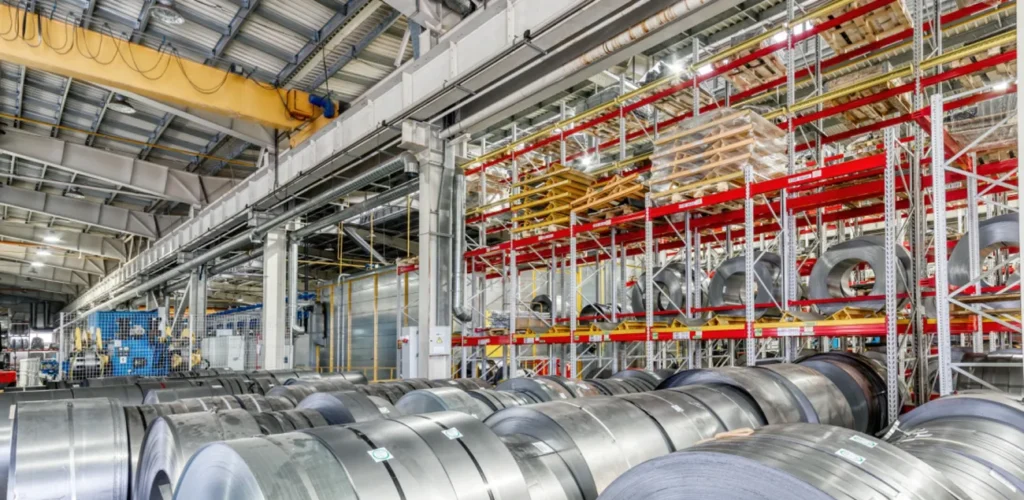
Shutterstock
Leading Producer Companies
Major Producers
- China Hongqiao Group (China) – Wenshan & Honghe hydro smelters plus legacy Shandong pots; ≈ 6.3-6.5 Mt y⁻¹. Shifting 1.2 Mt to greener grids by 2026.
- Aluminium Corporation of China (China) – Baotou, Guangxi, Yunnan clusters; ≈ 7.6 Mt in 2024 (+12 % YoY). Launched “Chalco GreenAl” in 2025.
- RUSAL (Russia) – Siberian hydro powerhouses, RA-550 inert-anode pilot; 3.99 Mt (> 90 % renewables).
- Rio Tinto Aluminium (Australia/Canada) – AP60 & ELYSIS demo cells in Québec, Boyne smelter; 3.3 Mt. First 200 kt inert-anode module due 2027-28.
- Alcoa Corporation (US) – Warrick (U.S.), Portland (AU), San Ciprián (ES); 2.3-2.5 Mt guidance for 2025; Iberian restart under way.
- Norsk Hydro (Norway) – Karmøy HAL4e, Sunndal, Husnes; ≈ 2.0-2.1 Mt, racing toward 100 % renewable power by 2030.
- Emirates Global Aluminium (EGA) (UAE) – Jebel Ali & Al-Taweelah; 2.7 Mt at ~4 t CO₂e t⁻¹.
- Vedanta Aluminium (India) – Jharsuguda mega-smelter, Lanjigarh refinery; 2.42 Mt with AI-driven pot-room controls.
Mid-sized Players on the Move
- Aluminium Bahrain (Alba) – Line 6 boosts nameplate to 1.6 Mt; hit 1.62 Mt in 2024.
- South32 – Hillside (South Africa), Mozal (Mozambique), Brazil Aluminium; ~1.2 Mt despite Mozal unrest.
- Century Aluminium – Plants in Kentucky, South Carolina, and Iceland delivered ~690 kt in 2024 under its Natur-Al™ low-carbon badge.
Industrial Applications Driving Aluminium Demand
Global appetite for aluminium kept climbing in 2024—primary demand hovered near 72 Mt, and once you fold in recycled feed the market stretches to roughly 105 Mt. Analysts at the International Aluminium Institute put a bold number on the horizon: a 40% jump by 2030 as electrified transport, clean-energy hardware and skyline-reshaping urbanisation move from slide decks to steel-toed reality.
Transport leads the charge. Battery-electric cars now carry an extra 30–40 kg of the metal, thanks to sprawling gigacastings, extruded crash boxes and chilled battery trays; even aerospace is re-emerging from its pandemic stall. Close on its heels, the building-and-construction trade laps up extrusions for curtain walls, thermally broken window frames and those seemingly endless solar-panel rails perched on rooftops worldwide. Packaging maintains its stronghold—light, endlessly recyclable beverage cans command about 17% of global consumption—while power cables, busbars and the casings of 5G hardware show how aluminium is steadily elbowing copper aside in the electrical arena.
Recycled metal already covers about a third of the world’s needs, slicing energy use by up to 95% compared with virgin production. Policy tailwinds are stiffening: Europe’s Carbon Border Adjustment Mechanism will soon price embedded CO₂, China is doubling down on scrap imports to exceed 15 Mt of secondary aluminium by 2027, and the U.S. Inflation Reduction Act nudges federal buyers toward billet that carries a carbon tag under 4 t CO₂e per tonne. Put bluntly, the next decade belongs to producers who can deliver cleaner tonnes faster than the competition.
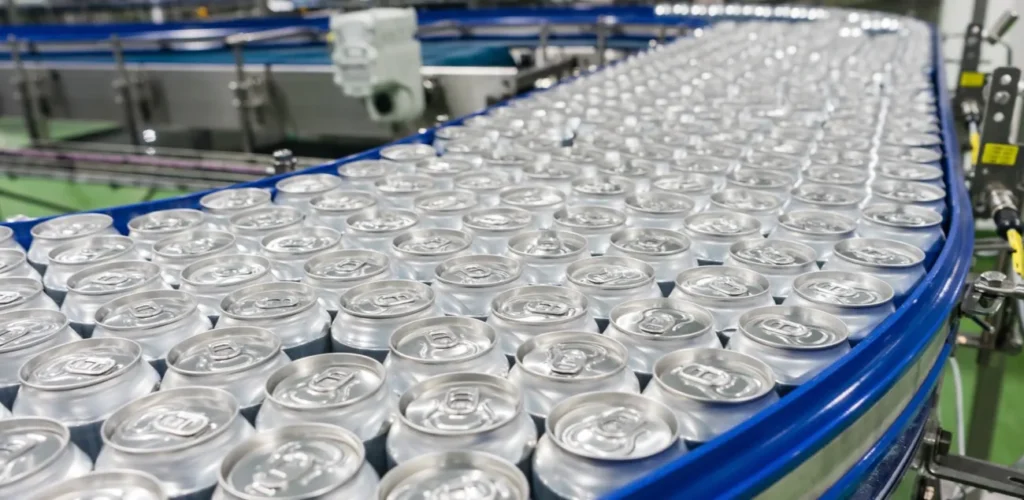
Shutterstock
Aluminium Market & Price Trends
As of 13 July 2025, LME cash sits near US $2 450 /t. Reuters’ January poll pegs the 2025 average at US $2 574 /t (+6.3 % YoY). Goldman Sachs warns of a brief dip to US $2 300 /t in Q4 before a 2026 rebound. China’s 45 Mt cap, Yunnan’s seasonal power blues, and Western tariff or carbon-border premia all tug prices in different directions. Electricity—40 % of a smelter’s cost—remains the joker in the pack. Yet long-run forces, from lighter vehicles to renewable hardware, should keep any cyclical dips shallow and short-lived.
Investment Opportunities
Why bullish? Every million EVs needs roughly 400 kt of aluminium, solar frames are booming, and low-carbon ingot already earns premiums of US $40-60 /t. Secondary casthouses smile at low energy bills and tiny CO₂ liabilities. Why cautious? Power price spikes can turn profits to dust, and trade policy can redraw supply maps overnight. Entry points run from LME futures to producer equities (Norsk Hydro, Alcoa, RUSAL) or diversified metal ETFs. Watching power tariffs and policy shifts is essential, but the long-term tilt toward electrification and renewables lends durable support.
Future Outlook
Game-changing tech—ELYSIS and RA-550 inert-anode pots, hydrogen-fired calciners, bolt-on CCS—could hack away ~70 % of aluminium’s CO₂ footprint by 2035. Greenfield smelters may be scarce, but rising EV sales, solar roll-outs, and grid upgrades all shout one thing: demand is going nowhere but up. Most forecasts see prices settling in a US $2 500-2 800 /t band toward 2030, provided renewable power grows fast enough and trade flare-ups stay contained. With its featherweight strength and infinite recyclability, aluminium is set to remain a linchpin of the clean-energy age.
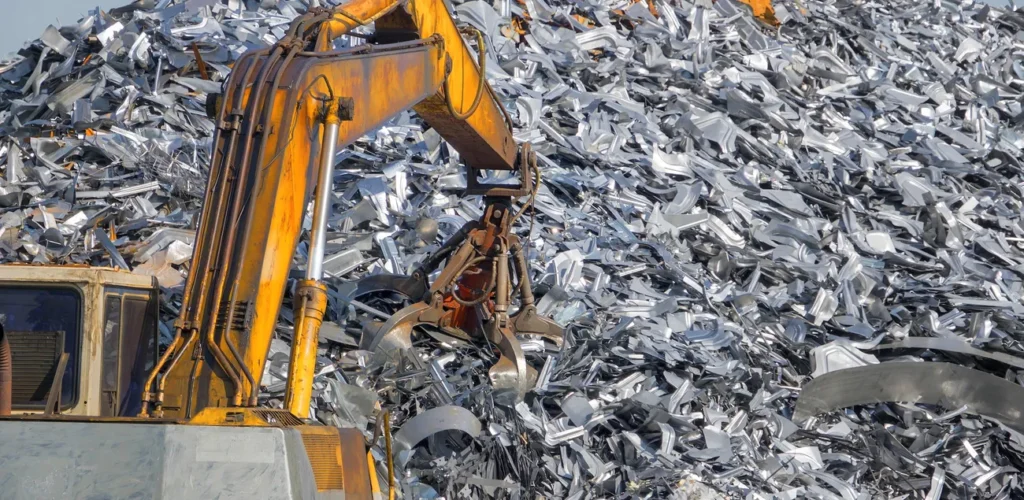
Shutterstock
Frequently Asked Questions (FAQ)
How does aluminium improve crash safety?
Per kilogram, it soaks up nearly double the impact energy of mild steel, letting automakers shave ~200 kg off vehicle mass without flunking crash tests.
What exactly is “green aluminium”?
Metal made with < 4 t CO₂e /t, versus ~16 t for coal-powered smelting. To get there you need renewable electricity, inert anodes, and offsets for residual emissions.
How efficient is the recycling loop?
Scrap is shredded, decoated at ~500 °C, then remelted—using ~5 % of the energy and emitting ~5 % of the CO₂ of primary smelting. More than 30 Mt of such secondary metal hit the market in 2024, avoiding ~200 Mt CO₂e.
Will hydrogen boost aluminium demand?
Cryogenic pipes, liquid-H₂ tanks, and electrolyser housings prefer 5xxx-series alloys, adding an estimated ~0.5 Mt y⁻¹ by 2030.
Best ways to invest?
LME futures and options, shares in major producers, bonds from low-carbon smelters, or broad-based metal ETFs. Just remember: margin swings track local power tariffs and premium spreads.
Is aluminium viable for grid storage?
Aluminium-air batteries boast theoretical ~8 kWh kg-¹ energy density. Indian pilots aim for ≈ 500 cycles; recyclability of electrolytes remains the key hurdle.
Why is the U.S. Midwest premium sky-high?
Tariffs, freight bottlenecks, and domestic curtailments have pushed it to US $1 323 /t in 2025.
When will inert-anode smelters scale up?
Rio Tinto and RUSAL expect their first 200 kt commercial modules by 2028. Capex runs ~15 % higher than standard pots, but process-emission cuts of ~80 % sweeten the deal.
